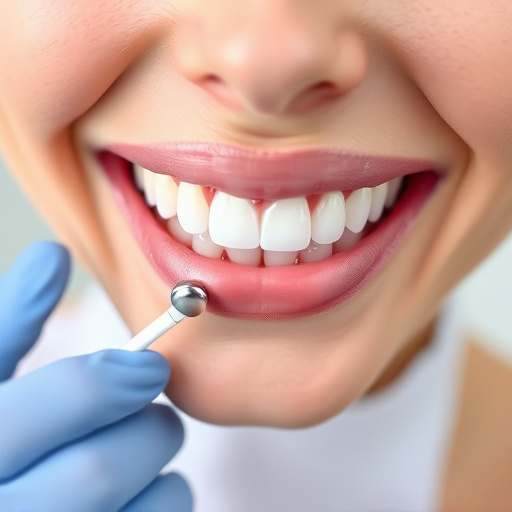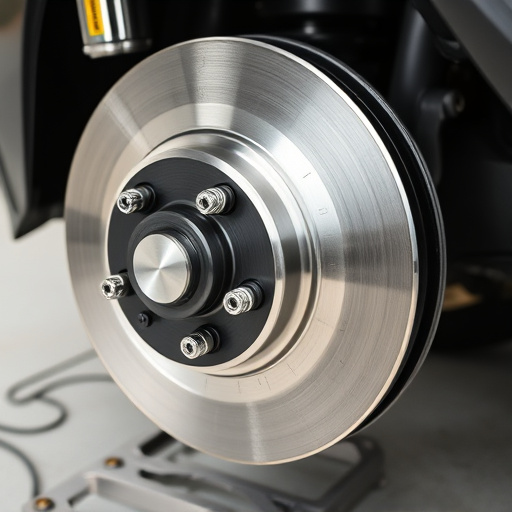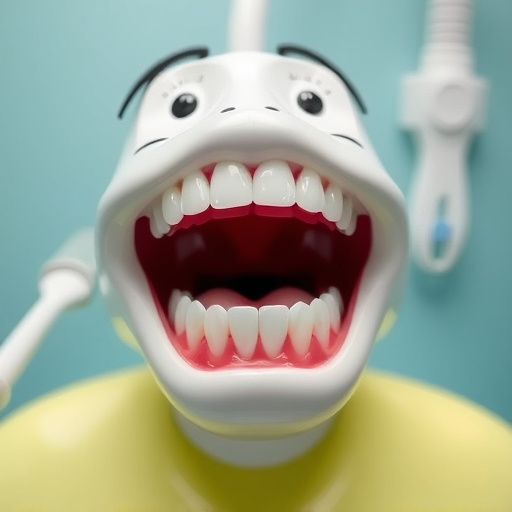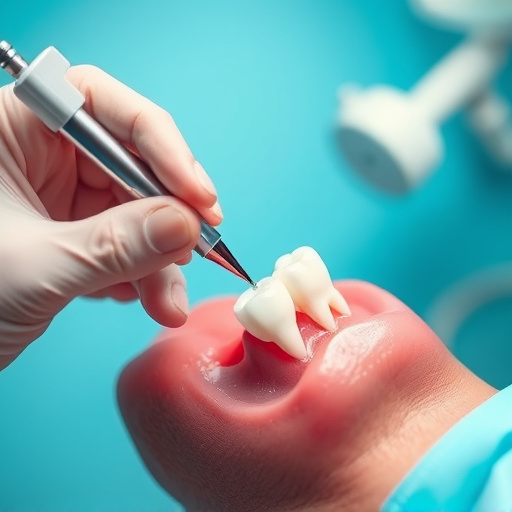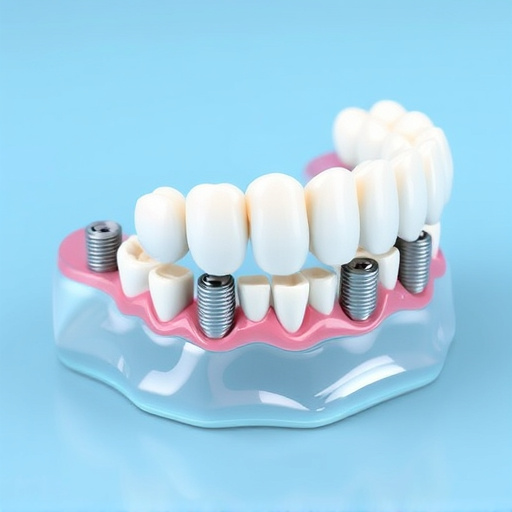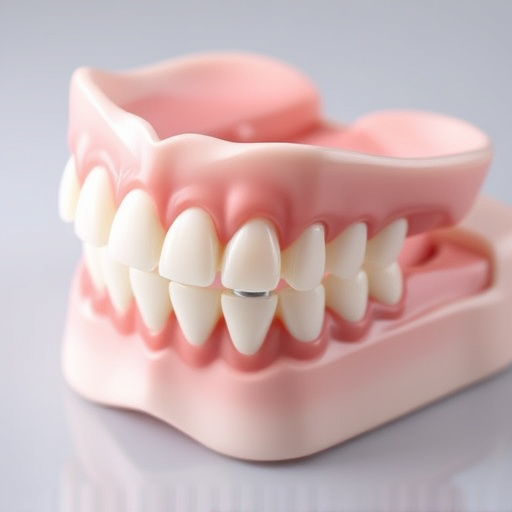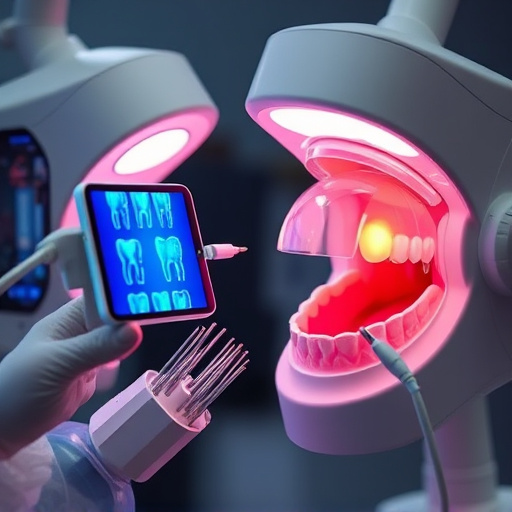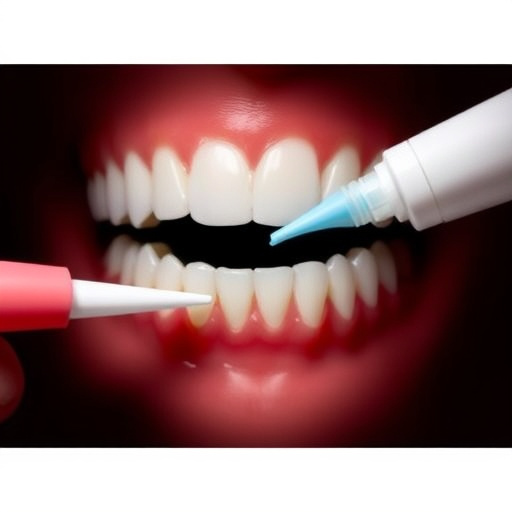TMJ disorder treatment has evolved into a specialized area of dentistry, addressing pain and dysfunction in the temporomandibular joint. Causes are diverse, from misalignment to trauma, and symptoms include facial pain, clicking sounds, and difficulty opening the mouth. Advanced diagnostics like X-rays and CT scans aid in identifying root causes. Treatment plans range from non-invasive physical therapy and dental interventions to more advanced procedures, tailored to severity, ensuring effective TMJ disorder management.
TMJ disorder treatment has advanced significantly, incorporating sophisticated diagnostic tools for accurate identification. This comprehensive guide delves into the intricate world of temporomandibular joint (TMJ) disorders, exploring symptoms and underlying causes. By utilizing cutting-edge technology, healthcare professionals can now offer a range of non-invasive treatment options, providing patients with effective relief without surgery. Discover how these innovative approaches revolutionize TMJ disorder management, offering hope for improved oral health and enhanced quality of life.
- Understanding TMJ Disorder: Symptoms and Causes
- Advanced Diagnostics for Accurate Diagnosis
- Non-Invasive Treatment Options: A Comprehensive Approach
Understanding TMJ Disorder: Symptoms and Causes
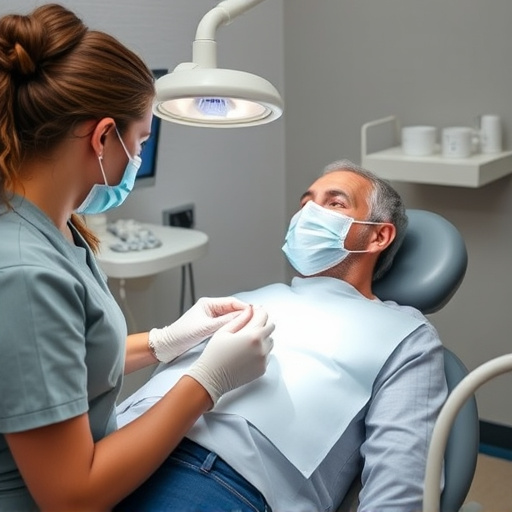
TMJ disorder treatment has become a specialized focus within general dentistry, offering relief to patients experiencing pain and dysfunction in their temporomandibular joint (TMJ). This complex joint connects the jawbone to the skull and enables jaw movement for functions like chewing, speaking, and yawning. When something goes awry, TMJ disorder can result, manifesting through a variety of symptoms. These may include facial pain, headaches, clicking or popping sounds in the joint, difficulty opening or closing the mouth, and even earaches.
Causes of TMJ disorder vary but often involve a combination of factors. Misalignment of the jaw, often due to developmental issues or wisdom tooth removal, can lead to improper bite alignment. Grinding teeth (bruxism) is another common culprit, as it places excessive strain on the joint over time. Trauma, such as from a car accident or fall, and certain medical conditions like arthritis, also contribute to TMJ disorder. Understanding these causes is key in determining the most effective TMJ disorder treatment approach, which may range from conservative measures like oral splints and physical therapy to more advanced procedures, depending on the severity of the condition.
Advanced Diagnostics for Accurate Diagnosis
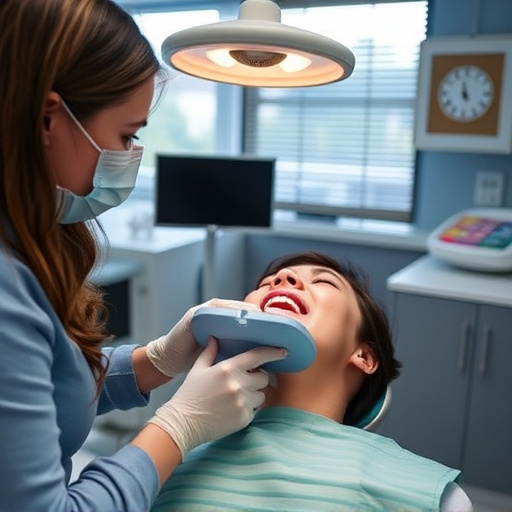
Advanced diagnostic tools have revolutionized TMJ disorder treatment by enabling precise identification of the root causes. Through a combination of advanced imaging techniques, such as X-rays and CT scans, dental professionals can now visualize the complex structures within the jaw joint with unprecedented clarity. This detailed perspective allows for more accurate diagnoses, distinguishing between various conditions that may present similar symptoms.
By integrating these advanced diagnostics into their practices, dentists can offer personalized treatment plans tailored to individual patient needs. Whether it’s exploring options like dental bonding or cosmetic fillings to restore alignment and alleviate pain, or considering more extensive procedures such as tooth extractions as a last resort, accurate diagnosis is the cornerstone of effective TMJ disorder management.
Non-Invasive Treatment Options: A Comprehensive Approach
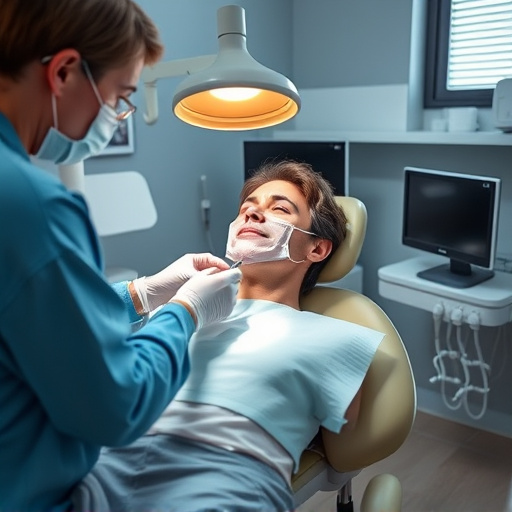
Non-Invasive Treatment Options offer a comprehensive approach to TMJ disorder treatment, focusing on minimizing discomfort and maximizing patient comfort. Techniques such as physical therapy, including jaw exercises and manual manipulation, are often the first line of defense. These methods aim to relax the muscles surrounding the temporomandibular joint (TMJ), reducing pain and improving mobility.
Additionally, general dentistry interventions like cosmetic fillings or wisdom tooth removal can play a significant role in TMJ disorder treatment. In some cases, removing damaged teeth or restoring them with fillings can alleviate pressure on the TMJ. These non-invasive procedures are designed to provide immediate relief while promoting long-term stability for patients suffering from TMJ disorders.
TMJ disorder treatment has advanced significantly with the integration of modern diagnostic tools, enabling more accurate assessments and effective non-invasive options. By understanding the symptoms and causes of this condition, individuals can navigate their treatment journey with confidence. The comprehensive approach discussed here showcases a commitment to alleviating TMJ disorder symptoms through innovative methods, offering hope for improved quality of life.


